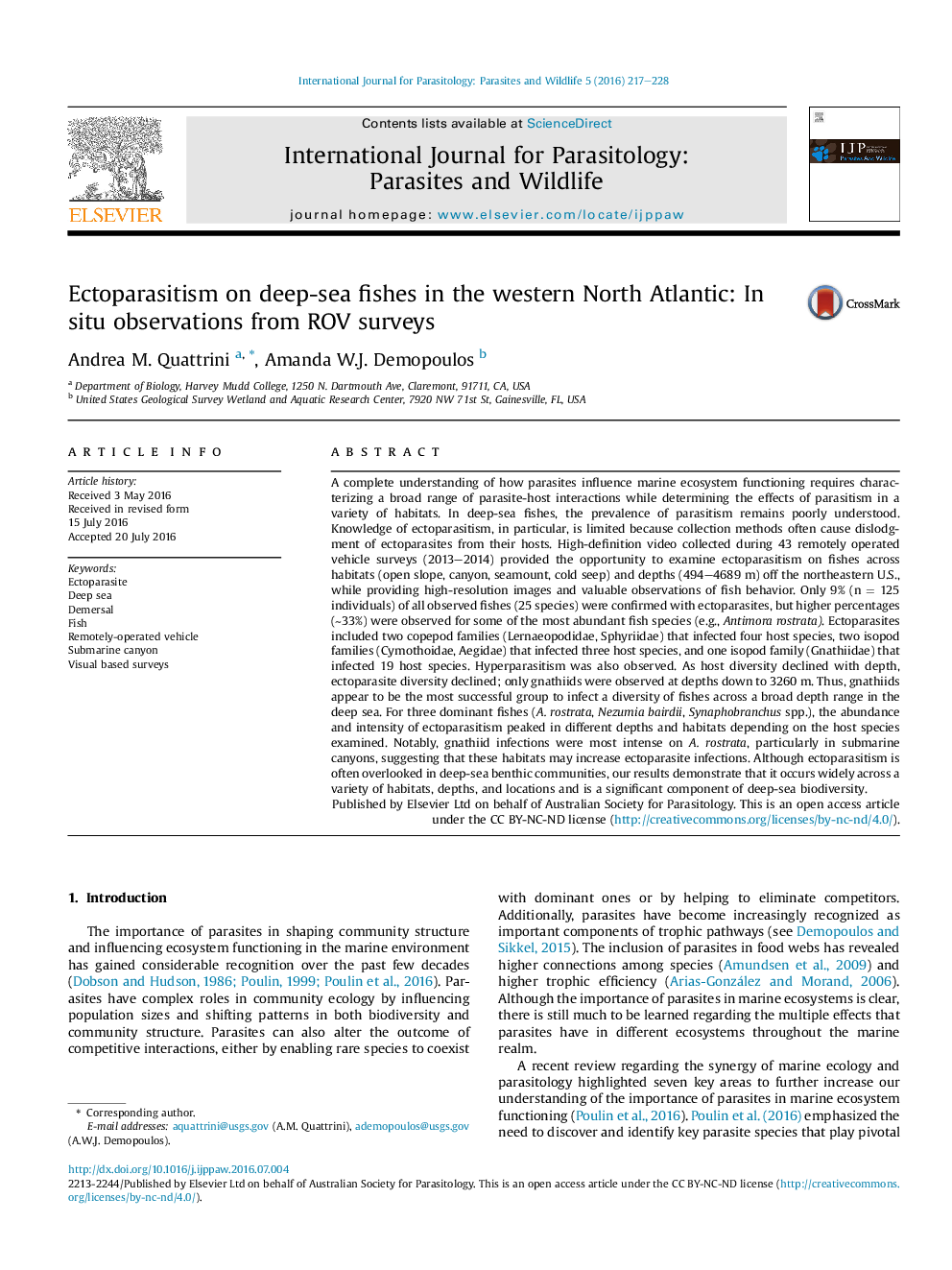| کد مقاله | کد نشریه | سال انتشار | مقاله انگلیسی | نسخه تمام متن |
|---|---|---|---|---|
| 2055155 | 1401039 | 2016 | 12 صفحه PDF | دانلود رایگان |
• Ectoparasitism occurs across a wide range of depths, habitats, and localities.
• Host specificity was exhibited by 4 families of ectoparasites.
• Gnathiidae infected a wide diversity of fishes.
• Ectoparasite diversity and host specificity declined with depth.
• ROV surveys provide valuable observations of ectoparasitism and fish behavior.
A complete understanding of how parasites influence marine ecosystem functioning requires characterizing a broad range of parasite-host interactions while determining the effects of parasitism in a variety of habitats. In deep-sea fishes, the prevalence of parasitism remains poorly understood. Knowledge of ectoparasitism, in particular, is limited because collection methods often cause dislodgment of ectoparasites from their hosts. High-definition video collected during 43 remotely operated vehicle surveys (2013–2014) provided the opportunity to examine ectoparasitism on fishes across habitats (open slope, canyon, seamount, cold seep) and depths (494–4689 m) off the northeastern U.S., while providing high-resolution images and valuable observations of fish behavior. Only 9% (n = 125 individuals) of all observed fishes (25 species) were confirmed with ectoparasites, but higher percentages (∼33%) were observed for some of the most abundant fish species (e.g., Antimora rostrata). Ectoparasites included two copepod families (Lernaeopodidae, Sphyriidae) that infected four host species, two isopod families (Cymothoidae, Aegidae) that infected three host species, and one isopod family (Gnathiidae) that infected 19 host species. Hyperparasitism was also observed. As host diversity declined with depth, ectoparasite diversity declined; only gnathiids were observed at depths down to 3260 m. Thus, gnathiids appear to be the most successful group to infect a diversity of fishes across a broad depth range in the deep sea. For three dominant fishes (A. rostrata, Nezumia bairdii, Synaphobranchus spp.), the abundance and intensity of ectoparasitism peaked in different depths and habitats depending on the host species examined. Notably, gnathiid infections were most intense on A. rostrata, particularly in submarine canyons, suggesting that these habitats may increase ectoparasite infections. Although ectoparasitism is often overlooked in deep-sea benthic communities, our results demonstrate that it occurs widely across a variety of habitats, depths, and locations and is a significant component of deep-sea biodiversity.
Figure optionsDownload as PowerPoint slide
Journal: International Journal for Parasitology: Parasites and Wildlife - Volume 5, Issue 3, December 2016, Pages 217–228
